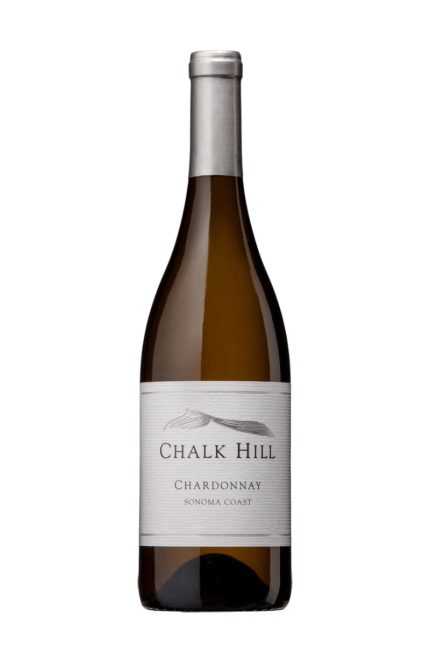
Chalk-Hill-Sonoma-Coast-Chardonnay-2022-750-ML-430x645
Chardonnay is one of the most popular and widely cultivated white grape varieties in the world, producing a wine that embodies elegance, versatility, and richness. From the cool vineyards of Burgundy to the sunny slopes of California, Chardonnay has captured the hearts of winemakers and wine lovers alike for centuries. Whether you’re a seasoned connoisseur or just beginning to explore the world of wine, Chardonnay offers a unique and rewarding experience. This article explores the grape’s history, characteristics, winemaking process, and its role in the global wine scene.
Origins and History
The origins of chardonnay wine are deeply rooted in the Burgundy region of France, where it was first cultivated and vinified. It is believed to have been named after the village of Chardonnay in the Mâconnais region, which, in turn, derives its name from the Latin phrase “Cardonnacum,” meaning “a place where thistles grow.” Over the centuries, Chardonnay spread across Europe and eventually the world, becoming synonymous with quality white wine.
Chardonnay’s parentage is also a point of interest. DNA profiling has revealed that it is a cross between Pinot Noir and a little-known grape variety called Gouais Blanc. This lineage links Chardonnay closely with other noble grapes of Burgundy, cementing its reputation as one of the world’s greatest wine grapes.
Today, Chardonnay is cultivated in almost every major wine-producing country, from France, Italy, and Spain to the United States, Australia, and South Africa. Its adaptability to different climates and soils has made it a winemaker’s favorite, with styles ranging from crisp, unoaked versions to rich, buttery, oak-aged expressions.
Characteristics of Chardonnay
One of the most appealing aspects of Chardonnay is its ability to take on various flavors depending on the terroir and winemaking techniques used. This makes it a grape variety with incredible diversity and depth.
In cooler climates, such as Burgundy or coastal areas of California, Chardonnay tends to exhibit bright acidity with notes of green apple, lemon, and pear. These wines often have a mineral quality, with a flinty or chalky finish. On the other hand, in warmer regions like Australia or central California, Chardonnay develops richer flavors of tropical fruit such as pineapple, mango, and ripe peach. The wines from these regions often have a fuller body and lower acidity.
Oak aging plays a significant role in the style of Chardonnay. Wines that are aged in oak barrels, especially those that undergo malolactic fermentation, often have creamy, buttery textures with flavors of vanilla, toasted nuts, and caramel. Unoaked Chardonnays, which are gaining popularity for their freshness and purity, focus more on the fruit and retain a crisp, clean profile.
Another characteristic of Chardonnay is its ability to age. While many white wines are best consumed young, high-quality Chardonnays can develop beautifully over time, with older vintages revealing complex layers of honey, dried fruit, and hazelnut.
Winemaking Techniques
Chardonnay’s versatility is not only evident in the glass but also in the winery. Winemakers have a wide range of options when it comes to how they vinify Chardonnay, allowing them to create different expressions of the grape.
The decision to ferment in stainless steel or oak barrels is one of the most important choices winemakers face. Stainless steel preserves the grape’s natural acidity and fruit flavors, resulting in a wine that is crisp, clean, and refreshing. This style of Chardonnay is often preferred in cooler regions, where the focus is on the grape’s purity and terroir-driven characteristics.
On the other hand, oak fermentation and aging add layers of complexity to Chardonnay. The wine takes on flavors from the wood, such as vanilla, clove, and baking spices, while malolactic fermentation – a process in which tart malic acid is converted into softer lactic acid – gives the wine its creamy, buttery texture. Oak-aged Chardonnays are typically fuller-bodied and more rounded, making them ideal for pairing with rich foods like lobster, creamy pastas, and roast chicken.
Another technique that winemakers use to enhance the complexity of Chardonnay is lees stirring, or bâtonnage. During fermentation, the yeast cells that convert sugar into alcohol eventually die and settle at the bottom of the barrel. By stirring these lees back into the wine periodically, winemakers can add texture, body, and a toasty, yeasty character to the final product.
In sparkling wine production, Chardonnay plays a key role as one of the primary grapes used in Champagne and other traditional method sparkling wines. Blanc de Blancs, a Champagne made exclusively from Chardonnay, showcases the grape’s bright acidity and delicate, citrusy flavors.
Chardonnay in the Global Wine Market
Chardonnay’s global success is a testament to its adaptability and universal appeal. From the classic elegance of French Chardonnays to the bold, sun-kissed wines of California and Australia, the grape has proven itself as one of the most versatile varieties in the world.
France remains one of the most important producers of Chardonnay, with Burgundy standing as its spiritual home. The wines from this region, particularly from the Côte de Beaune and Chablis, are renowned for their precision, complexity, and age-worthiness. Chablis, in particular, is famous for its unoaked, mineral-driven style, which is a far cry from the richer, oak-aged Chardonnays of the Côte de Beaune. These wines often come with a price tag to match their prestige, with Grand Cru Chardonnays from producers like Domaine Leflaive or Domaine de la Romanée-Conti fetching thousands of dollars per bottle.
In the United States, California is the epicenter of Chardonnay production, with regions like Napa Valley, Sonoma, and the Central Coast producing world-class examples. The California style tends to be fuller-bodied, with ripe fruit flavors and significant oak influence. However, in recent years, many producers have shifted towards a more restrained, balanced style, focusing on terroir and minimizing the use of oak.
Australia is another major player in the Chardonnay market, with regions like Margaret River, Yarra Valley, and Adelaide Hills producing top-notch wines. Australian Chardonnays often strike a balance between the ripe fruit of New World wines and the acidity and minerality found in Old World examples. These wines have gained international recognition for their quality and value.
Chardonnay also thrives in South Africa, New Zealand, and Chile, where the grape benefits from diverse climates and soils. In South Africa, the cool coastal regions of Stellenbosch and Walker Bay produce elegant, citrus-driven Chardonnays, while New Zealand’s Marlborough region is known for its vibrant, fruit-forward style.
Pairing Chardonnay with Food
One of the reasons chardonnay wine is so beloved is its incredible versatility when it comes to food pairing. Its wide range of styles means there’s a Chardonnay for nearly every dish.
Crisp, unoaked Chardonnays pair beautifully with seafood, salads, and light poultry dishes. Their bright acidity and fresh fruit flavors complement delicate flavors, such as oysters, shrimp, or grilled fish.
Oak-aged Chardonnays, with their richer, creamier profiles, are perfect for heartier dishes. Think lobster with butter sauce, roasted chicken, or creamy pasta dishes. The wine’s body and texture can stand up to these richer flavors, creating a harmonious balance between the food and the wine.
Chardonnay also pairs well with cheese, particularly soft, creamy cheeses like Brie or Camembert. The wine’s acidity cuts through the richness of the cheese, while the oak-aged versions add a complementary layer of nuttiness and spice.
Conclusion
Chardonnay’s enduring popularity is no accident. Its ability to reflect its terroir, combined with the winemaker’s touch, makes it one of the most dynamic and versatile wines in the world. Whether you prefer the steely, mineral-driven Chardonnays of Chablis or the rich, opulent expressions from California, there’s a style of Chardonnay to suit every palate. Its adaptability in the vineyard, winery, and at the table ensures that Chardonnay will continue to be a favorite among wine enthusiasts for generations to come.



